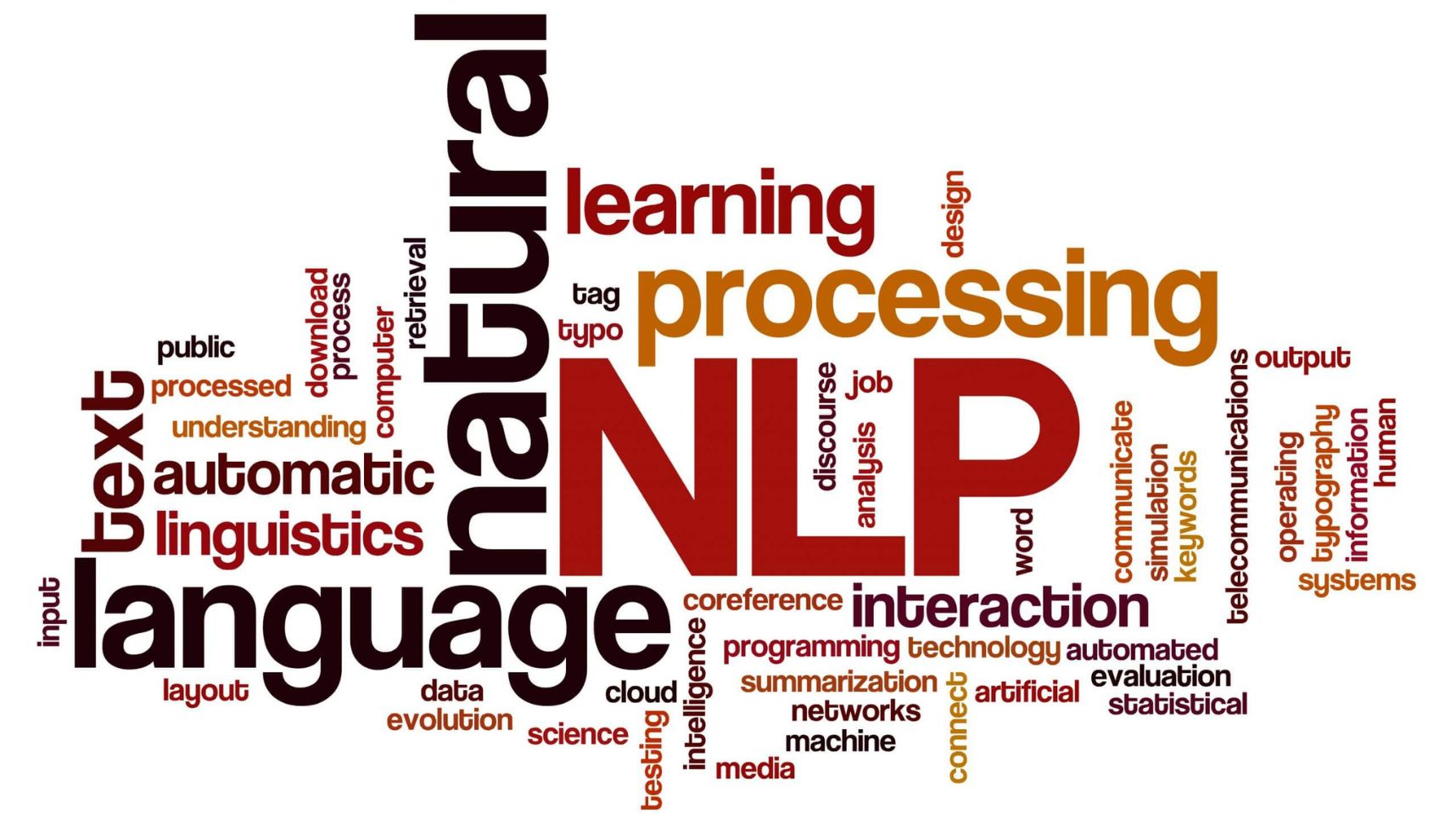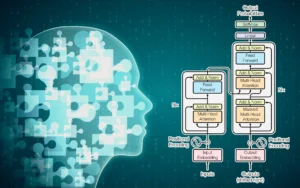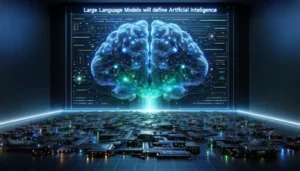Language Models: The Foundation of Modern Artificial Intelligence
Introduction
In the last decade, one of the most transformative breakthroughs in artificial intelligence (AI) has been the rise of language models. These models have revolutionized the way machines understand, process, and generate human language. From virtual assistants like Siri and Alexa to advanced AI systems such as GPT, Claude, and Gemini, language models form the backbone of most natural language processing (NLP) technologies.
But what exactly are language models? How do they work, and why are they so powerful? This article provides an in-depth exploration of language models, their evolution, applications, challenges, and the future of AI-driven communication.
What is a Language Model?
A language model (LM) is a computational system designed to understand, predict, and generate human language. At its core, it assigns probabilities to sequences of words, enabling it to determine how likely one word is to follow another in a given context.
For example, given the phrase:
“I want to drink a cup of …”
A language model will likely predict the next word as “tea” or “coffee” rather than unrelated words like “car” or “shoe.”
This predictive ability makes language models essential for a wide range of tasks, including text completion, translation, summarization, sentiment analysis, and even reasoning.
The Evolution of Language Models
Language models have undergone a fascinating journey of innovation.
1. Rule-Based Systems (Pre-1990s)
Early attempts at language understanding were rule-based. These systems relied on manually crafted linguistic rules, dictionaries, and grammar structures. While effective for specific use cases, they lacked flexibility and scalability.
2. Statistical Language Models (1990s–2010s)
With the rise of data-driven methods, statistical models like n-grams became popular. These models estimated word probabilities based on co-occurrence patterns in large corpora. Although groundbreaking, they struggled with long-term context and data sparsity.
3. Neural Network Language Models (2010–2017)
The shift to neural networks brought a leap in performance. Models such as word2vec and GloVe introduced vector embeddings, allowing words to be represented in continuous vector spaces. This enabled machines to capture semantic relationships (e.g., king – man + woman ≈ queen).
4. Transformer Models and Deep Learning (2017–Present)
The introduction of the Transformer architecture (Vaswani et al., 2017) marked a turning point. Transformers rely on attention mechanisms that allow them to capture long-range dependencies in text. This innovation powered the development of advanced models like:
-
BERT (2018) – Specialized in understanding context bidirectionally.
-
GPT series (2018–2025) – Generative models capable of producing human-like text.
-
T5, XLNet, PaLM, Claude, Gemini – Expanding capabilities in reasoning, multi-modality, and task-specific fine-tuning.
Today, large language models (LLMs) with billions or even trillions of parameters are driving AI research and real-world applications.
How Language Models Work
At a high level, language models function through three key mechanisms:
1. Tokenization
Language is broken down into smaller units called tokens (words, subwords, or characters). For instance, “Artificial Intelligence” might be split into [“Artificial”, “Intelligence”] or even smaller subword units.
2. Embedding Representation
Each token is mapped into a vector in high-dimensional space, capturing semantic meaning. Similar words appear closer in this vector space.
3. Training with Context
Models learn from vast datasets using training objectives such as:
-
Masked Language Modeling (MLM) – Predicting missing words (used in BERT).
-
Causal Language Modeling (CLM) – Predicting the next word in a sequence (used in GPT).
The Transformer architecture uses self-attention layers to evaluate how words relate to each other across a sentence or document. This enables nuanced understanding and coherent text generation.
Applications of Language Models
Language models have become ubiquitous across industries.
1. Search Engines and Information Retrieval
Modern search engines like Google and Bing rely on LLMs to understand queries, match intent, and rank results more effectively.
2. Virtual Assistants and Chatbots
Assistants such as Siri, Alexa, and ChatGPT use language models to converse naturally, answer questions, and perform tasks.
3. Machine Translation
Models like Google Translate and DeepL use LLMs to provide near-human translations across languages.
4. Content Creation
From generating marketing copy to writing articles and coding, LLMs are transforming creative industries.
5. Healthcare
Language models assist in medical research by summarizing papers, drafting patient notes, and analyzing clinical data.
6. Education
Students and teachers use LLMs for tutoring, summarizing lectures, and generating practice exercises.
7. Software Development
AI coding assistants like GitHub Copilot and Tabnine leverage language models trained on code to help developers write and debug software.
8. Business Analytics
Language models analyze financial reports, customer feedback, and market trends to support decision-making.
Advantages of Language Models
-
Human-like Communication – They generate fluent, contextually relevant text.
-
Scalability – Once trained, they can serve millions of users.
-
Adaptability – Fine-tuning allows domain-specific applications (e.g., legal AI, medical AI).
-
Productivity Boost – Automates repetitive tasks like drafting emails, writing reports, or summarizing texts.
Challenges and Limitations
Despite their power, language models face several challenges:
1. Bias and Fairness
LLMs inherit biases from their training data, leading to problematic or discriminatory outputs.
2. Hallucinations
Sometimes, models generate incorrect or fabricated information presented confidently.
3. Energy Consumption
Training LLMs requires enormous computational resources, raising concerns about sustainability.
4. Data Privacy
Using sensitive datasets for training poses ethical and legal risks.
5. Interpretability
LLMs operate as black boxes, making it hard to explain why they generate certain outputs.
6. Over-Reliance
Excessive dependence on AI-generated content risks reducing human creativity and critical thinking.
Future of Language Models
The future of language models looks both exciting and complex. Some emerging directions include:
-
Multimodal Models – Integration of text, images, audio, and video (e.g., GPT-4o, Gemini).
-
Smaller, Efficient Models – Optimized architectures like LoRA and quantization to run LLMs on edge devices.
-
Responsible AI – Building mechanisms for transparency, safety, and fairness.
-
Reasoning and Planning – Moving beyond language to decision-making and problem-solving.
-
Domain-Specific LLMs – Tailored models for law, medicine, finance, and education.
-
AI Agents – LLMs integrated into autonomous systems that can plan, execute tasks, and collaborate with humans.
Ethical Considerations
As language models grow in influence, ethical responsibility becomes paramount:
-
Bias Mitigation – Ensuring inclusivity in training datasets.
-
Transparency – Clear disclosure when content is AI-generated.
-
Regulation – Governments are developing AI policies to balance innovation with safety.
-
Human Oversight – AI should complement, not replace, human judgment.
Case Studies
1. ChatGPT in Education
Universities are experimenting with AI tutors powered by GPT to help students with personalized learning. While effective, they require oversight to prevent misinformation.
2. AI in Journalism
News outlets are using LLMs to draft articles, summarize reports, and analyze social media trends. However, concerns about authenticity and plagiarism remain.
3. Healthcare Applications
LLMs like Med-PaLM are trained specifically on medical datasets, assisting doctors in diagnosing conditions and explaining medical literature.
Conclusion
Language models represent one of the most remarkable achievements in artificial intelligence. From predicting simple words to generating human-like conversations, they have redefined the boundaries of machine intelligence. Their applications span nearly every sector, driving efficiency, creativity, and innovation.
Yet, with great power comes great responsibility. As language models continue to advance, addressing challenges such as bias, misinformation, and ethical use will be crucial.
Ultimately, the story of language models is not just about machines learning to speak our language—it is about humanity learning how to responsibly harness technology that can think, reason, and communicate at scale.
https://bitsofall.com/https-yourblog-com-ai-game-theory-social-scenarios/
https://bitsofall.com/https-yourblog-com-ai-in-astrophysics/
Deceptive AI Behavior: Understanding Risks, Ethics, and the Future of Trustworthy Machines






